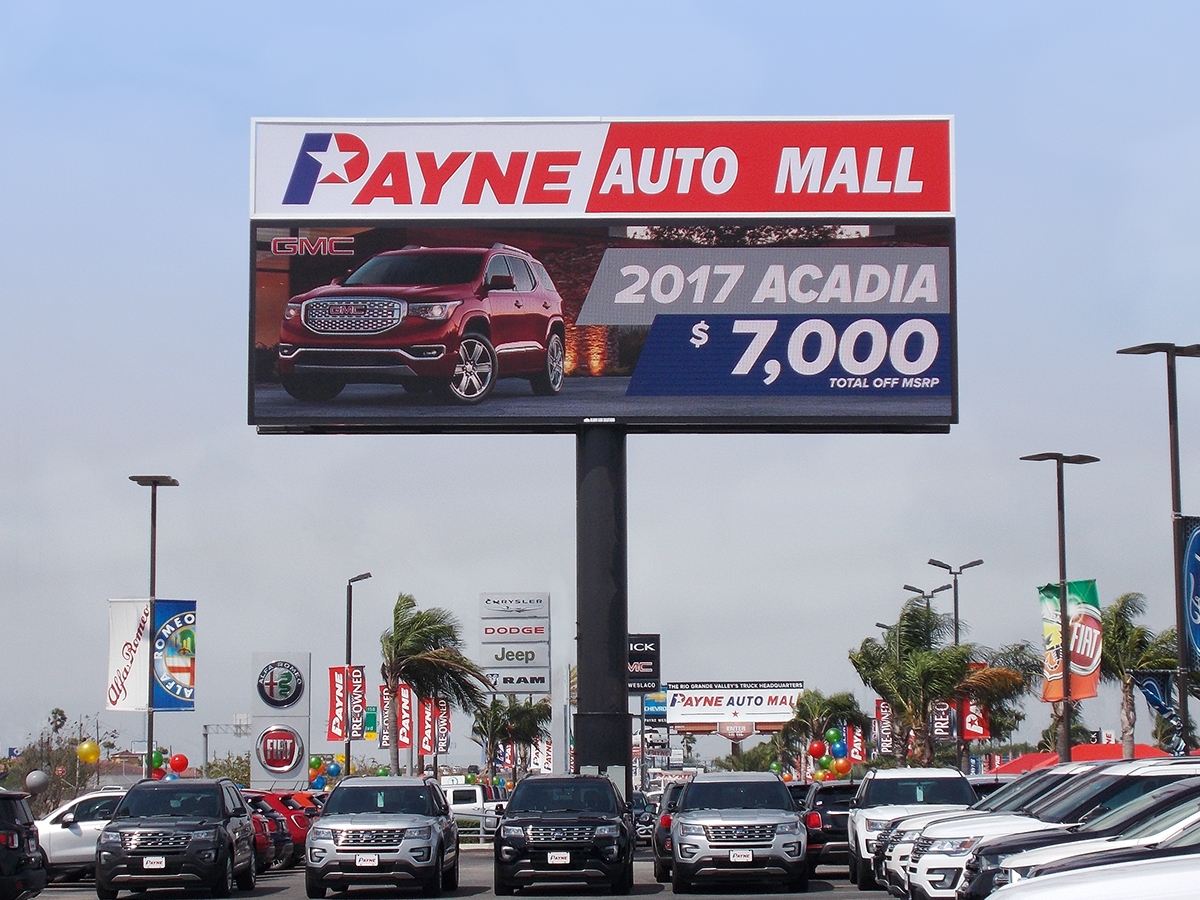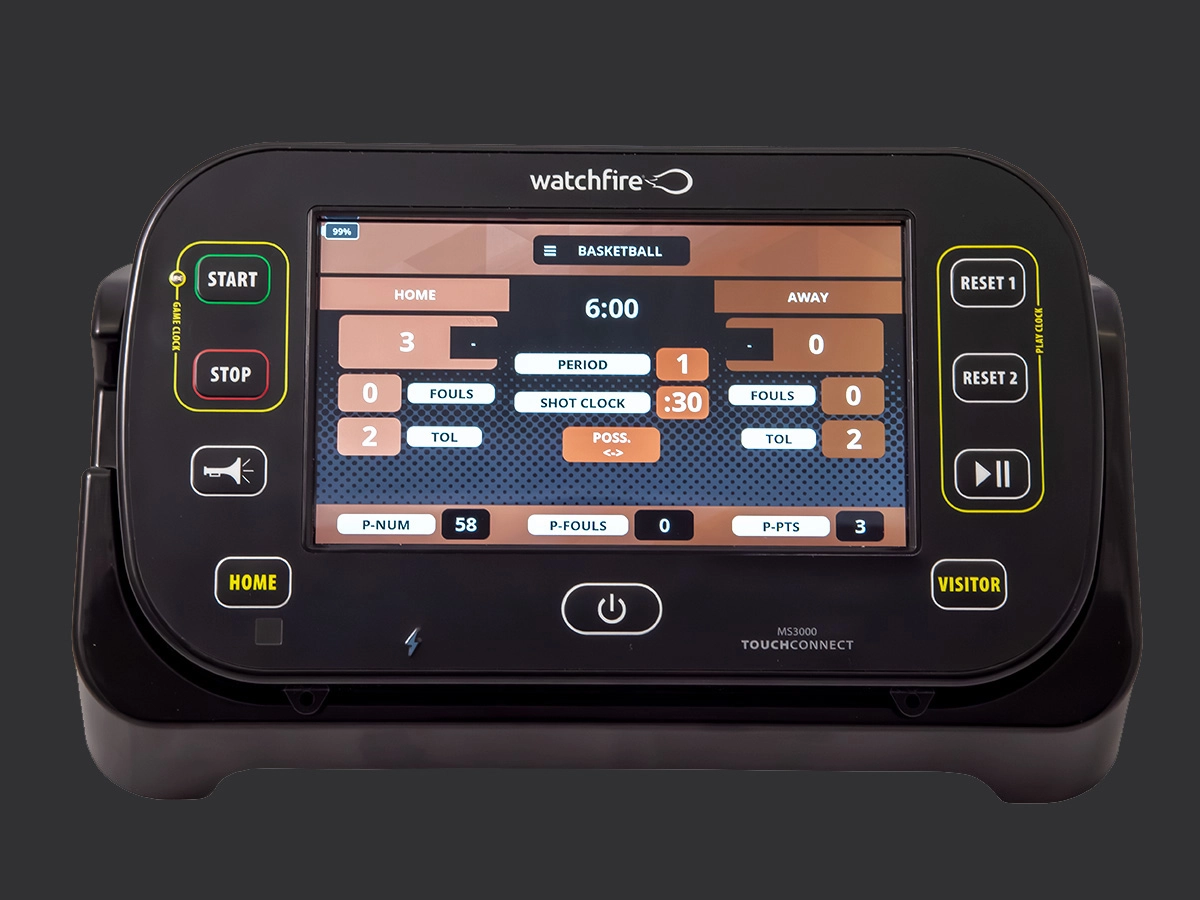Blog
Digital Difference – On Premise LED Signs and Digital Billboards
September 11, 2017

Local businesses and big advertisers use digital signage differently, and use different terminology to describe their signage. Many struggle with identifying the difference between a digital billboard and an LED sign since outward appearances would suggest they are the same except for size. However, the way digital displays are permitted, where they are located, and the type of content they display are just some of the differences between these two sign types. Let’s dig a little deeper into understanding their unique characteristics.
Both products are designed for distinct audiences. On premise LED signs are typically used by a single business or organization, while digital billboards are used by outdoor advertising operators to engage multiple advertisers. LED signs promote an individual business or organization and, as indicated by their designation as “on premise”, they are usually located on the same property as the business. Digital billboards are used to rent space to many advertisers, and are located along highways, interstates, or main local roads. A digital billboard will often be placed on land that has been leased by the operator.
So, what about size? Well digital billboards do tend to be larger than on premise led signs, but that is not always the case. Digital billboards typically follow some size standards as set by the advertising industry at a time when printed vinyl was the main way to use out of home advertising. Graduated sizes, known as poster (11’ x 22’), jr. bulletin (10’ x 36’) and bulletin (14’ x 48’) are the most common in the billboard industry. On premise signs are manufactured in custom sizes depending on placement and the design of the sign structure, and the only limits are the budget or the allowable square footage based on the permit. One example is this on premise LED sign, sized like a digital bulletin at 14’ by 48’, located at Payne Auto Mall in Weslaco, Texas. Its size may resemble a billboard, but because it is located on the dealership premises and is permitted only to advertise that business, it is considered an on premise sign.
The purchase and installation process is a little bit different for on premise signs and digital billboards. Our on premise signs are sold through sign companies, who then work directly with business owners (banks, schools, shopping centers, auto dealerships, etc.) as part of a comprehensive signage package. Digital billboards are sold to billboard companies who may employ their own installation crew or contract with a specialized billboard structure company. Some large billboard companies even employ their own service technicians, while others rely on Watchfire to schedule and dispatch service through our network operation center.

Digital billboards and on premise LED signs are also permitted differently. In order to install a digital billboard, a permit is required from both the state and the local municipality. Digital billboards are prohibited in Montana, as well as Maine, Vermont, Alaska and Hawaii, who do not allow any billboards. An on premise LED sign usually needs only a permit from the local municipality, and in the case of some uses, such as for schools or athletic scoreboards, a permit may not be required. Permits for on premise signs may limit the size, distance from a roadway or height of the structure. Other restrictions may be placed on the brightness of the sign, the colors it uses, or how often the messages may be changed. Because these rules may vary widely from community to community, we always recommend a local sign company to help ensure your sign complies.
The type of content allowed also distinguishes a digital billboard from an on premise LED sign. Businesses who install an on premise LED sign may be able to use the sign to display animations or live video, depending on local laws, while animations are prohibited on digital billboards at the federal level. Watchfire on premise LED signs come with a free library of still images and animations called EasyArt, which makes it easy to create and schedule messages. The library contains categories so that businesses can quickly find content that is relevant to their products and services. Conversely, digital billboard operators are often provided artwork by advertisers, or they may create advertisements as part of a local campaign. Both LED signs and digital billboards can be used to display messages in real time, like weather conditions, sports scores or market prices. Digital billboard space is usually sold to six or eight advertisers at a time, with the time divided by “slot” or “flip”.
On premise LED signs and digital billboards are also operated with different software. Watchfire’s on premise signs use a proprietary software that serves as a content creation tool as well as a scheduler and sign diagnostics portal. Our on premise customers can use installed software called Ignite OP, or a cloud-based option called Ignite OPx. Both include our EasyArt library, but Ignite OPx is recommended if the business will be managing multiple locations. Billboard operators also manage multiple locations, but because they are reselling the space on their billboards, the software they use has more features to help them manage inventory and service their advertisers. For this reason, Watchfire digital billboards use Ignite OA, a cloud-based solution that helps operators schedule campaigns across multiple billboards, grant advertiser access, view occupancy and availability and generate POP reports. New features like proposal generation tools, workflow rules and contract management became available in 2017.
All Watchfire digital sign products have some core similarities too. They both feature solid weld, heavy walled aluminum cabinets, fully encapsulated modules and battle-tested designs that provide years of worry-free operation. Both are supported in-house, where our service, engineering, software and manufacturing teams work together under one roof. Their differences are subtle but important and we are proud to produce top quality digital signage that is designed to meet each customer’s specific needs.
